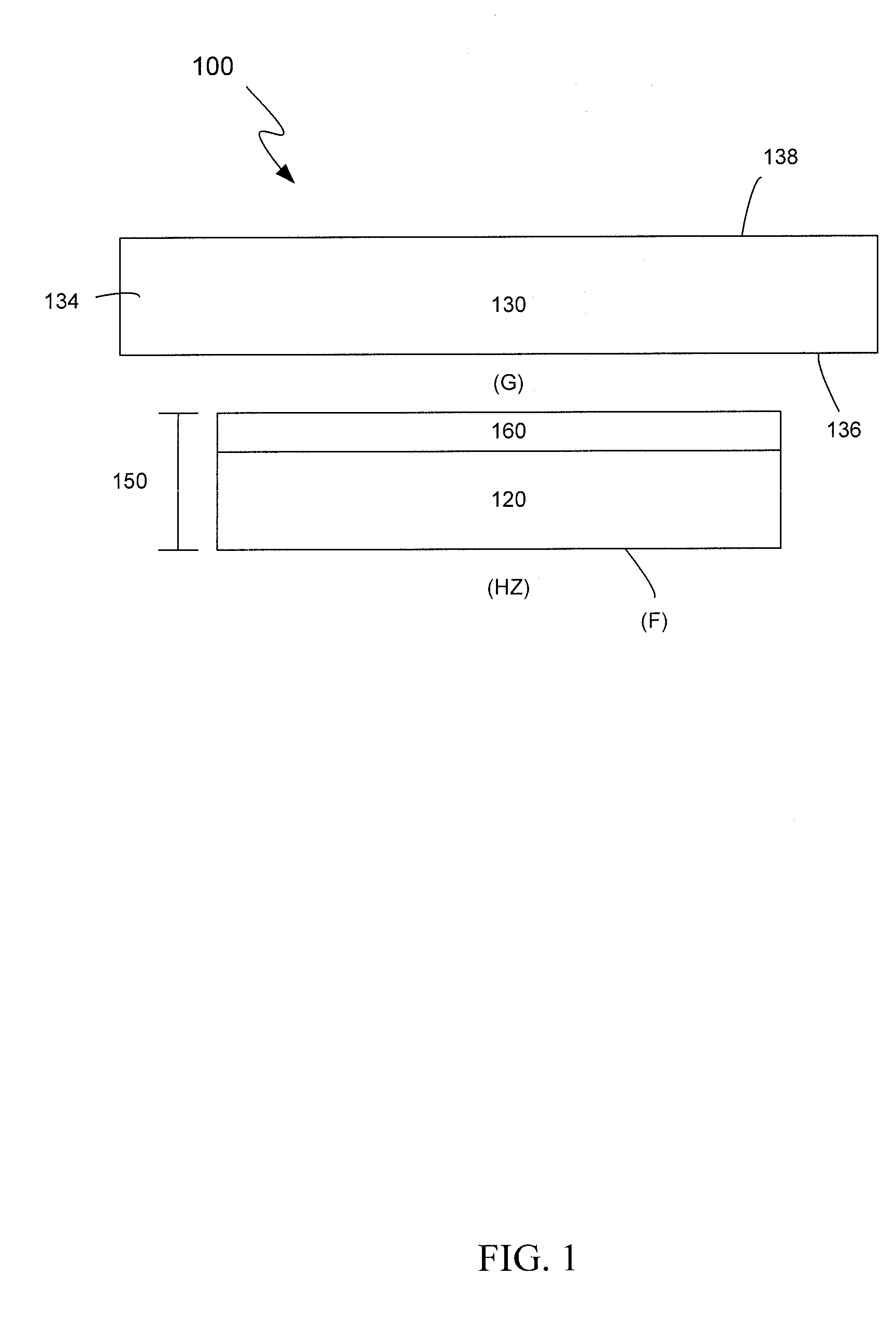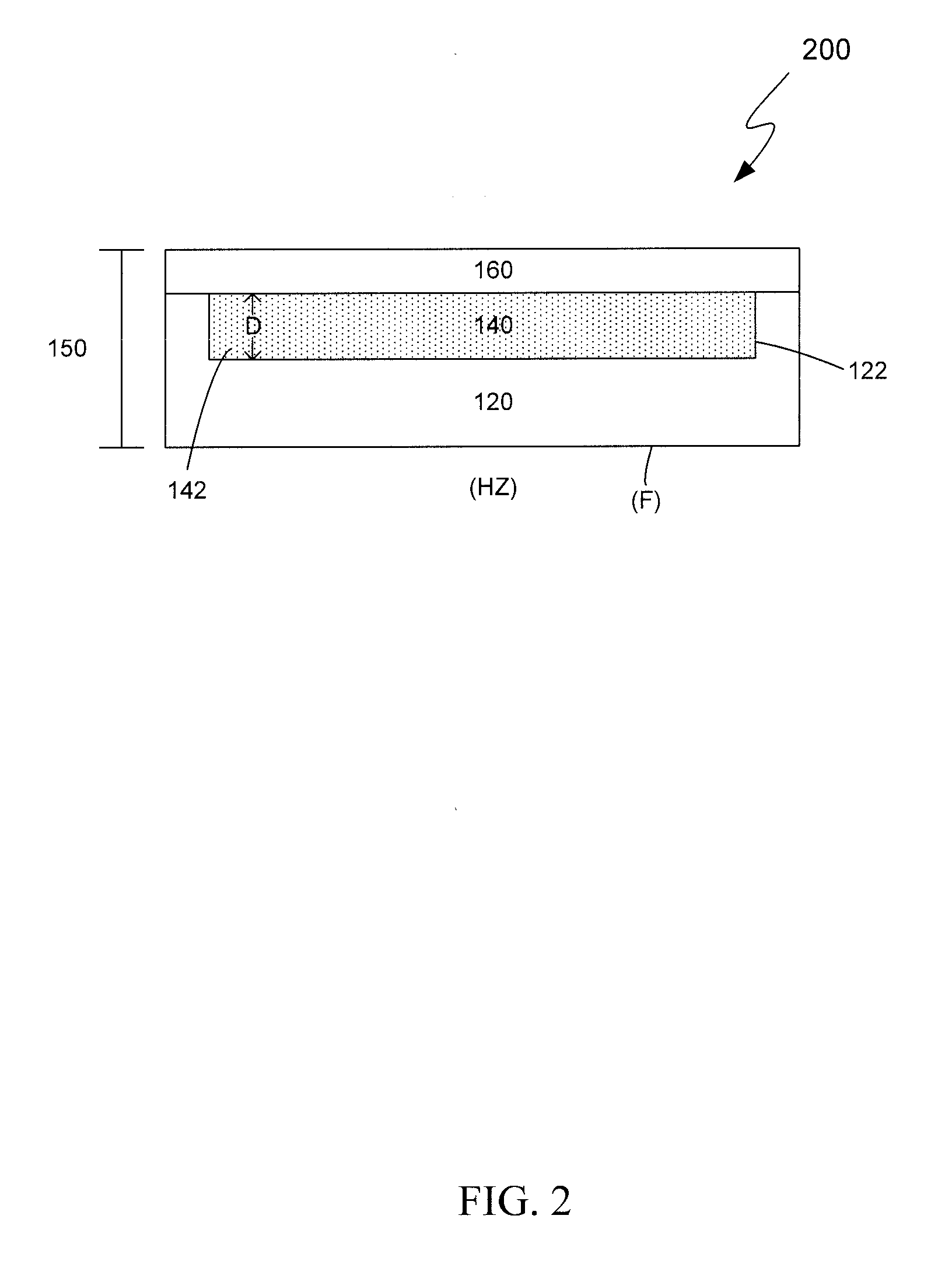Fire resistant systems, methods and apparatus
a technology of fire-resistant systems and methods, applied in the field of fire-resistant systems, methods and apparatuses, can solve the problems of high weight, brittleness of ceramic materials, smoke or fume, etc., and achieve the effects of lightweight and modular capability, and facilitating high fire resistan
- Summary
- Abstract
- Description
- Claims
- Application Information
AI Technical Summary
Benefits of technology
Problems solved by technology
Method used
Image
Examples
example 1
[0102]A panel similar to that of FIG. 2, as described above, is produced, as illustrated in FIG. 9. The panel includes a passive layer made of vermiculite, a secondary layer containing ATH (aluminum-tri-hydrate, Al(OH)3) as a functional material, and a back layer of aerogel blanket. The passive layer has dimensions of about 2.5 in. (W)×2.5 in. (L)×1 in. (D). The passive layer includes a recessed portion having dimensions of about 2 in. (W)×2 in. (L)×0.187 in. (D). The recessed portion is filled with ATH powder. The back layer has dimensions of about 2.5 in. (W)×2.5 in. (L)×0.25 in. (D).
[0103]The panel is tested for fire resistance in accordance with UL-1709 (i.e., Rapid Rise Fire Test of Protection Materials for Structural Steel, Jul. 20, 2005) with a heat flux and maximum temperature curve higher than the UL 1709 curve. A protected material having dimensions of about 2.375 in. (W)×2.375 in. (L)×0.125 in. (D), and made of aluminum 6061-T6 aluminum alloy, is placed on top of the pane...
example 2
[0105]A panel similar to that of FIG. 2, as described above, is produced, as illustrated in FIG. 10. The panel includes a passive layer made of vermiculite, a secondary layer containing ATH (aluminum-tri-hydrate, Al(OH)3) as a functional material, and a back layer of aerogel blanket. The passive layer has dimensions of about 2.5 in. (W)×2.5 in. (L)×1 in. (D). The passive layer includes a recessed portion having dimensions of about 2 in. (W)×2 in. (L)×0.02 in. (D). The recessed portion is partially filled with ATH powder (less powder than powder than in Example 1). The back layer has dimensions of about 2.5 in. (W)×2.5 in. (L)×0.25 in. (D).
[0106]The panel is tested for fire resistance in accordance with UL-1709 (i.e., Rapid Rise Fire Test of Protection Materials for Structural Steel, Jul. 20, 2005) with a heat flux and maximum temperature curve higher than the UL 1709 curve. A protected material having dimensions of about 2.375 in. (W)×2.375 in. (L)×0.125 in. (D), and made of aluminu...
example 3
[0108]A panel similar to that of FIG. 1, as described above, except that the aerogel blanket back layer is replaced with a secondary layer filled with ATH, is produced, as illustrated in FIG. 11. The panel includes a passive layer made of vermiculite, and a secondary layer containing ATH (aluminum-tri-hydrate, Al(OH)3) as a functional material. The passive layer has dimensions of about 2.5 in. (W)×2.5 in. (L)×1 in. (D). The passive layer includes a recessed portion having dimensions of about 2 in. (W)×2 in. (L)×0.02 in. (D). The recessed portion is filled with ATH powder.
[0109]The panel is tested for fire resistance in accordance with UL-1709 (i.e., Rapid Rise Fire Test of Protection Materials for Structural Steel, Jul. 20, 2005) with a heat flux and maximum temperature curve higher than the UL 1709 curve. A protected material having dimensions of about 2.375 in. (W)×2.375 in. (L)×0.125 in. (D), and made of aluminum 6061-T6 aluminum alloy, is placed on top of the panel. A thermocoup...
PUM
| Property | Measurement | Unit |
|---|---|---|
| thickness | aaaaa | aaaaa |
| density | aaaaa | aaaaa |
| thickness | aaaaa | aaaaa |
Abstract
Description
Claims
Application Information
 Login to View More
Login to View More - R&D
- Intellectual Property
- Life Sciences
- Materials
- Tech Scout
- Unparalleled Data Quality
- Higher Quality Content
- 60% Fewer Hallucinations
Browse by: Latest US Patents, China's latest patents, Technical Efficacy Thesaurus, Application Domain, Technology Topic, Popular Technical Reports.
© 2025 PatSnap. All rights reserved.Legal|Privacy policy|Modern Slavery Act Transparency Statement|Sitemap|About US| Contact US: help@patsnap.com



